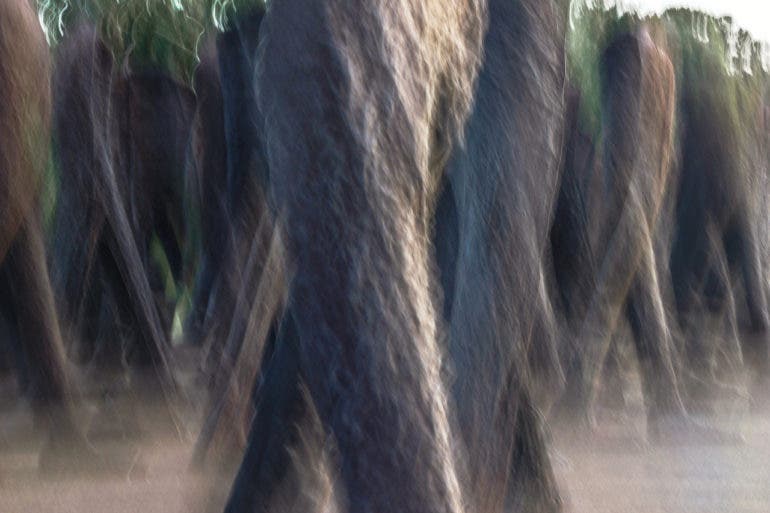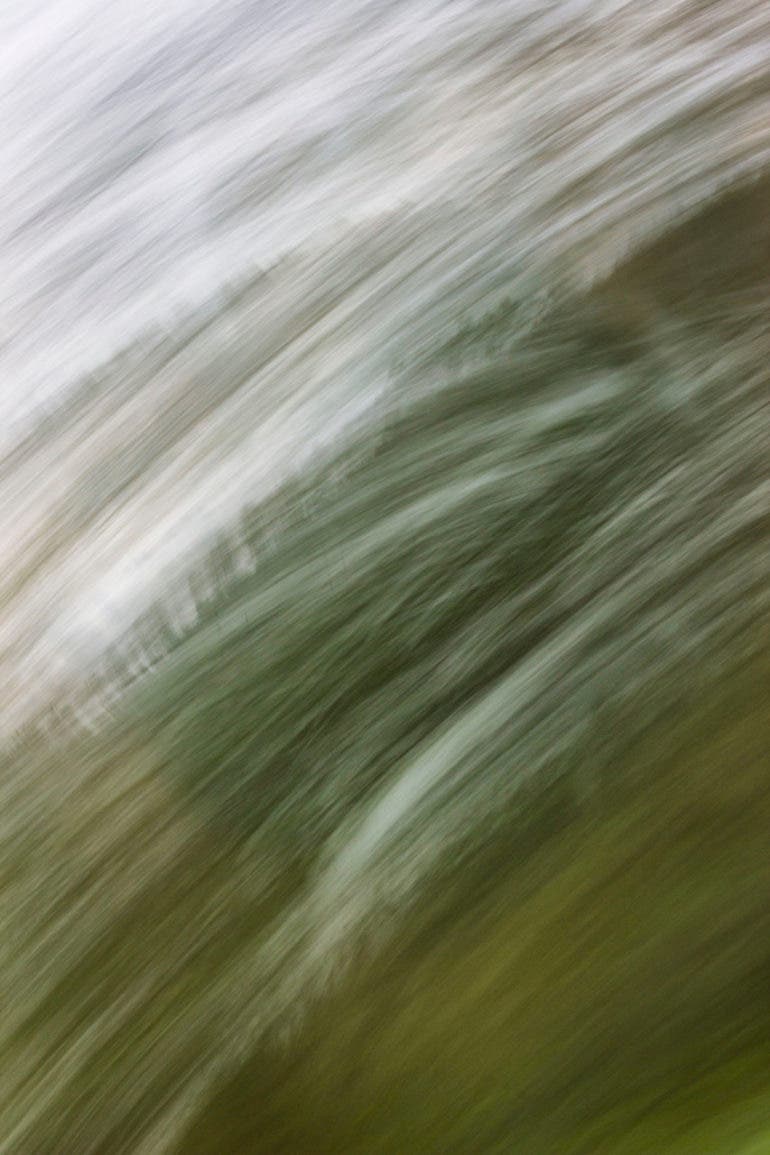Alessandro Corsini Used No Photoshop for These Hypnotizing Photos
All images by Alessandro Corsini. Used with permission.
My name is Alessandro Corsini. I’m an Italian artist, photographer, and media professional based in Berlin (Germany) for over a decade. Despite having started with photography pretty early, the journey to fine art photography has been long. My academic, professional, and artistic background is a trajectory from a commercial to a scientific and then to an artistic approach to media. During this trajectory, I worked with different media: video, photography, interactive media, and experimental languages at their intersection.
I could classify my art photography as abstract, street, or portrait photography. But the conceptual space I inhabit is one that is eclectic, open to influences, genre-defiant, and in constant transformation. And in this liminal space, synthesis, not analysis, rules.

As an artist, I’m interested in both concept and form. But in dealing with these, I consider media and genres only means to an end.
I started learning black and white film photography, development, and printing techniques during my middle school years in Rockville (MD, USA). But being my father, a portrait photography enthusiast, photography has actually been a part of my life for as long as I can remember. During high school and university, I would occasionally skip lessons with my Minolta film camera to document historical, medieval costume parades, take portraits of my mates at the seaside, experiment with backlighting or with light-painting, in an improvised dark room, with my girlfriend as a model.

My last ten years have been enormously important in refining my visual culture, my aesthetic sensibility, and, most of all, my vision. Differently than most people think, the technique is not the most time-consuming – or hardest – aspect of photography to learn. And it’s also not what actually sets apart the wannabes from the real photographers. The “eye,” the aesthetic sensibility, the feel for photography is that decisive aspect. No books exist on how to make beautiful pictures. Books may contain a set of general rules to make a photo correct from a technical perspective, but the concept of “beautiful” is a totally subjective one. So being a professional photographer requires, in order to make the right aesthetic choices, having a concept of what is generally regarded as “beautiful” by society, by your audience, or by your customers. Being an artist instead means having a peculiar, unique vision independently from what is commonly regarded as “beautiful.” Coming from the commercial world of advertising, my artistic vision can be considered a synthesis between these two.

Photography is another way for me to let my subconscious express itself. Most of the time, I’m not even aware of why I’m attracted by a certain photographic subject and not something else or why I like certain pictures of mine and not others. I usually only understand years later what I was expressing with a particular photo. It’s like my subconscious talking to my future self about my past self.
At the very moment of shooting, it’s all about chasing the beauty in the viewfinder in a totally intuitive, instinctive, and immersive way. Later, when selecting and editing the photos, there is more time for detachment and rationality but, at the end of the day, it’s still your aesthetic sensibility making the choices.
Whereas photographers from the first decades of the century like Man Ray and Bill Brandt are fascinating for their vanguardist and experimental strength, the photographer I probably feel aesthetically more inspired by, as a fine-art and street-photographer, is Fan Ho. His use of the human shadow as a formal element, the geometries in the composition, the tonal contrasts, his precision are simply unrivaled. I think his influence on our modern visual culture is still enormously underestimated.

Despite starting with film photography, I’m actually a digital guy (I also hold a master’s in digital media). I embraced the digital revolution very early and never looked back. All in all, I’m always up-to-date with the latest technological innovations, and I’m not afraid to jump on the wagon as soon as they prove to be worthy, as with my mirrorless camera (SONY Alpha 7R2) and my studio equipment (made up of continuous, LED lights only). At the end of the day, it’s not about the technology but about the picture itself. And to all the film-photography buffs, I’d like to point out that the great artist photographers (and artists in general) of the past were innovators. Meaning they always pioneered the use of the newest technology of the time. Concerning technique and technology, artists look to the future, not to the past.
Despite this, I do have my little obsessions: manual focus, manual exposure, no flash, only prime lenses. 4 years ago, I bought my first zoom lens (Sony SEL G 28-135mm f4.0), and it nearly killed my passion for photography. I currently happily own three f1.4 to f1.8 prime lenses (Samyang and Sony) covering a good range of not-so-typical focal lengths (28mm, 45mm, 85mm). My favorite lens is the Samyang AF 85mm f1.4 FE. For my abstract, long-exposure photography, I use ND filters to be able to use long shutter speeds without overexposing.

I definitely prefer natural light if it’s available. ‘Less is more’ is my philosophy in life and in photography. And this minimalist attitude is not only reflected in the aesthetics of my pictures but also in my equipment and setups.
I’ve always been fascinated by abstract paintings. As a 10-year-old, on the wall next to my bed, I made an abstract drawing inspired by Kandinsky, my favorite abstract artist from back then. During university, I decorated my student residence room with a Mondrianesque composition of huge squares in primary colors. My one and only tattoo on my right arm – that I designed myself – is a dynamic composition of circles in futurist style.
The “Electropolis” Collection was born by chance while I was aboard a train crossing the Polish countryside in 2014, a time in which I spent several months in the city of Poznàn, near the border with Germany. Bored from the long journey, I took pictures of the landscape through the window. The logic dictates in these situations to maintain fast shutter speeds to keep the photo in focus. From the results, however, I found no joy: the photos all looked alike. Out of curiosity, I then started lowering the shutter speed.

Long exposure photography was not a new thing for me. I played around with light painting as a kid. But this was different. It wasn’t about direct lights leaving light streaks in a nightly or dark setting: this was daytime, long exposure photography.
As expected, the long exposures gave unusable, overexposed, or washed-out results. Then I remembered I had an ND filter in my backpack. With the ND filter, the results were finally starting to look interesting: my dull landscape photos had turned into streaks of color (see photo “Forward”). My abstract mind was triggered. But it only started getting really excited when a sudden bump of the train introduced that random, additional movement during exposure that turned the motion blur into the brushstroke of a painter and the whole digital image into…an abstract painting (see photo “due colori”)!

By changing the trajectory and speed with which the camera moved during the exposure – either through experimental hand gestures, body moves, or the motion of a means of transportation -, the motion blur would acquire different pictorial qualities and give the entire photo a particular character. I improvised hand gestures that resembled the act of painting on a canvas (ph. “Zeitgeist”), body movements that resembled dance moves (ph. “Duchamp”), and even tried combining these while in motion on a mean of transportation (ph. “Turner”).
In other words, my aesthetic research in this series was originally focused on exploring the painting-like quality of the motion blur and its expressive potential. Over time though, it became also clear to me that also the gestures, the moves made in the act of taking these photos were an essential part of their expressive power: the gestural dimension of photography. An expressive dimension that painting and other arts discovered in the 50s-70s with action painting (e.g., de Kooning, Pollock) and spatialism (e.g., Fontana) but that photography, to date, still hasn’t.





Be sure to follow Alessandro on his website and Instagram. Got a cool series that doesn’t use Photoshop? We want to see it. Click here to find the details on how to submit!